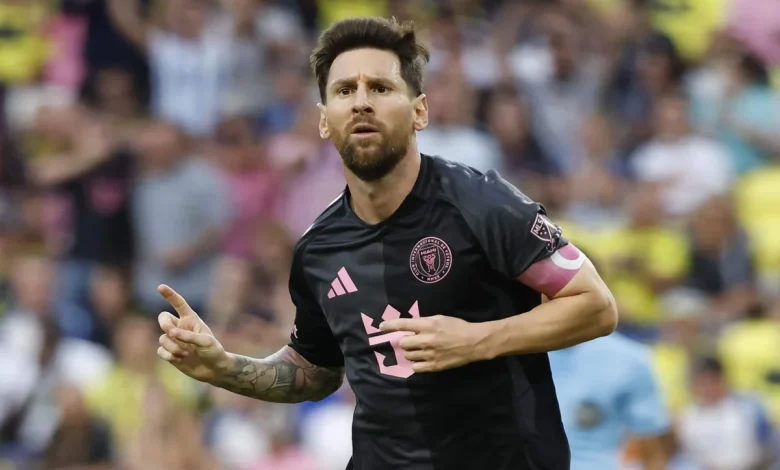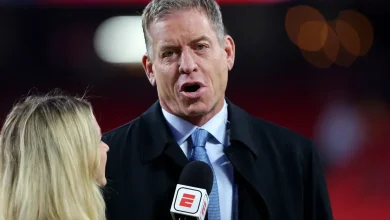MLS 2025 salaries: Messi remains top earner; Highest, lowest spenders revealed – The Athletic

The MLS Players Association released the second of its two annual updates of player salary data, painting the full picture of the 2025 season in wage expenditure for all 30 clubs.
The latest version reflects summer signings, headlined by LAFC star Son Heung-min, as well as new contracts done in the summer that began immediately. Lionel Messi’s new contract is not reflected in this update, meaning we’ll have to wait until the first 2026 salary release for that information.
Messi may have wishes for all of MLS to be able to spend unchecked, but his Inter Miami remains – by far – the highest spending team in the league. Toronto FC, meanwhile, went from second in the spring down to 27th out of 30 now following the midseason departures of high-priced Italians Lorenzo Insigne and Federico Bernardeschi.
Here are the key takeaways from the MLSPA’s biannual exercise:
Salary revealed for Son and other biggest summer signings
The top 10 midseason signings rank as follows in terms of contract size, but there’s a couple of caveats to explain below:
- Son Heung-min, LAFC — $11.15m
- Rodrigo De Paul, Inter Miami — $3.67m*
- Nico Fernández, NYCFC — $3.65m
- Kristoffer Velde, Portland Timbers — $3.03m
- Djordje Mihailovic, Toronto FC — $2.28m
- Paxten Aaronson, Colorado Rapids — $2.23m
- Wessam Abou Ali, Columbus Crew — $2.18m
- Iván Jaime, CF Montréal — $1.99m
- Matt Turner, New England Revolution — $1.94m
- Rwan Cruz, Real Salt Lake — $1.86m
All figures listed by MLSPA’s guaranteed compensation
*De Paul is still listed below DP threshold by MLS due to his base salary being $1.5m. The MLSPA calculated his guaranteed compensation with bonuses that will hit if the loan is made permanent.
LAFC set a new MLS record for most expensive transfer with its $26.5 million deal to sign Son from Tottenham. Now, his salary has been revealed on top of it. At $11.15 million, he is now the second-highest paid player in MLS behind Messi.
Son has been an instant success, both on the field and off. He already has nine goals and three assists in just 806 regular season minutes, and his first MLS goal, a free kick vs. FC Dallas, was voted by fans as MLS Goal of the Year.
De Paul is able to not count as a designated player, because his contract is amortized from when he was signed, keeping him under the max-TAM threshold. He will be a DP next season by his purchase option alone (around $17 million, per sources), but his salary is expected to be among the highest in the league as well.
His situation has drawn ire from other clubs: Structuring the deal as a loan with a purchase option is how Miami stayed cap-compliant in 2025. It’s legal, though, and not totally dissimilar to how Vancouver gave Thomas Müller a guaranteed deal through the winter with a DP option for 2026. Nevertheless, it has still rubbed folks the wrong way.
Müller, meanwhile, is listed with a $1.44 million salary, but that will go up in 2026 when he’s a DP.
Elsewhere, Djordje Mihailovic signed a new contract with Toronto FC after his blockbuster cash-for-player trade from Colorado this summer, while the Rapids’ replacement, Paxten Aaronson, is on a similar salary.
A couple other key summer signings that didn’t make the top 10 include Cincinnati’s Brenner ($280k) and Philadelphia’s Milan Iloski ($553k).
Messi is still MLS’s highest-paid player
Messi, unsurprisingly, remains the league’s highest paid player, at over $20M and more than double all other players in the league except for Son. He backed that up with a 29-goal, 19-assist season (first in the league in both categories), and he’s expected to be named the league’s first back-to-back MVP winner ever.
Son is the only summer signing to break into the league-wide top 10.
Highest- and lowest-spending MLS teams on salary
An important reminder: While the rankings of what teams pay on total salary per year is a useful look into expenditure, it is not the full picture. These figures do not include transfer fees, nor do they include investment in facilities or other discretionary spending.
In MLS, the biggest salary spend flexibility is on designated players, which separates the top five from the rest. Miami has three of the top five individual earners in the league, while Atlanta has three of the top 16.
In addition to an opulent wage bill, Atlanta spent upwards of $45-50 million in transfer fees over last summer and this winter. That was the most of any MLS team over two transfer windows in league history, but the club still finished second from the bottom in the Eastern Conference.
Four of the top five spending teams in salary made the playoffs.
Conversely, the Philadelphia Union won the Supporters’ Shield despite having the third-lowest wage bill in MLS. It is their second Shield win with a similarly tight salary sheet (2020).
Toronto FC was the biggest mover from the spring to fall, thanks to buyouts of Insigne and Bernardeschi. TFC ownership still owes both players money, but it’s not reflected in salary data, as the players were removed from TFC’s roster.
CF Montréal was the lowest spending team on salary this spring and remained at the bottom despite the summer signing of DP Iván Jaime.
Minnesota’s number is actually slightly lower in reality, as they are not paying all of Julian Gressel’s salary, but the exact number is unknown.
Three of the bottom five spending teams on salary are currently in the playoffs.
Miami clearing a ton of salary this winter
With the impending retirements of Sergio Busquets ($8.78M) and Jordi Alba ($6M), Miami will free up significant salary but also — more importantly — two DP spots.
One of those DP spots will go to De Paul, but with a third spot open, Miami is now unrestricted by salary cap restraints to bring in another big-name reinforcement.
Miami will have flexibility (and headaches) around those most valuable roster building spots, too. Beyond De Paul, another four players are on loan (including Tadeo Allende). Will there be room under the salary cap for permanent deals?
Also of note: Luis Suárez, 38, is out of contract, but he hasn’t announced plans for next year yet – whether that means retiring or playing on.
‘But We Have Paul Rothrock’ – The Best Bargain XI
Some self-imposed ground rules: To ensure an eclectic group of signings, I’m limiting myself on the homegrown and SuperDraft front (so, for instance, Seattle homegrown midfielder Obed Vargas at $134k and New England homegrown left back Peyton Miller at $106k are clearly acknowledged but not included in the XI for our purposes). This whole XI could very easily be formed with just those two categories, but scouting and signing a player from another club and doing so at a bargain rate should be celebrated. Also, you could make an XI just of Philadelphia, San Diego, Vancouver and Minnesota players.
There are genuine arguments to be made that some of the league’s best bargains are high-paid players – but that would defeat the purpose of this exercise, so we kept it under $400k guaranteed compensation when canvassing the salary list.
- Goalkeeper: CJ dos Santos, San Diego FC ($341k)
- Right back: Alex Freeman, Orlando City ($108k)
- Center back: Olwethu Makhana, Philadelphia Union ($289k)
- Center back: Manu Duah, San Diego FC ($85k)
- Left back: Anthony Markanich, Minnesota United ($104k)
- Right midfield: Paul Rothrock, Seattle Sounders ($104k)
- Center midfield: Sebastian Berhalter, Vancouver Whitecaps ($385k)
- Center midfield: Jovan Lukic, Philadelphia Union ($330k)
- Left midfield: Ali Ahmed, Vancouver Whitecaps ($159k)
- Striker: Preston Judd, San Jose Earthquakes ($234k)
- Striker: Owen Wolff, Austin FC ($221k)




